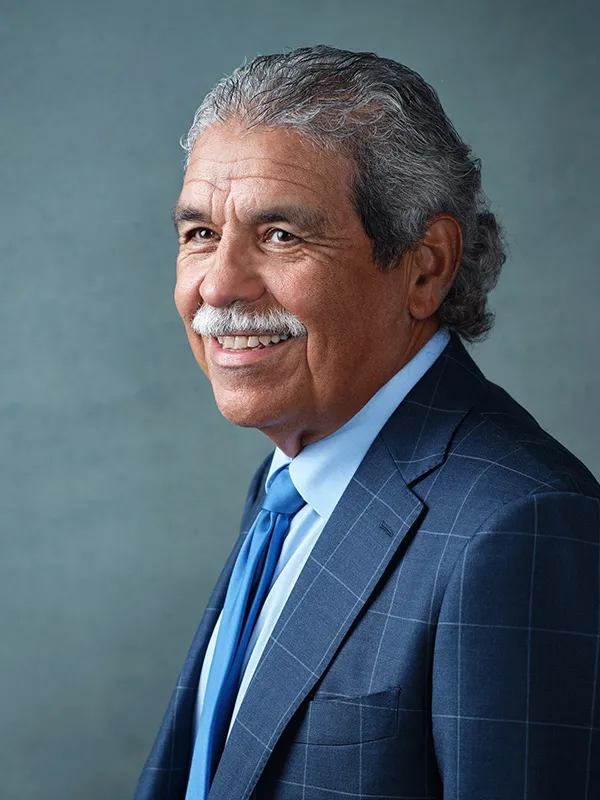Michael Hinojosa is superintendent-in-residence for the Council of Great City Schools and retired as superintendent of Dallas Independent School District in 2022. Linda Novick O’Keefe is co-founder and CEO of Common Threads, a nutrition education nonprofit.
Imagine a world where every child grows up understanding the vital connection between the food they eat and their overall health. A world where no child goes to bed hungry and everyone has equal access to the nutritious, culturally appropriate food they need to thrive. This does not need to be merely a dream, but rather a reality within reach. It’s a journey that unites the sometimes disconnected worlds of hunger, proper nutrition and health.

As American society faces complex challenges related to food, nutrition and health, the time is now for leaders across the nation to advocate for change and transformational vision. It's time to turn the food system on its head, fight hunger, and wage war on diet-related diseases.
The goal? By 2030, food will be elevated to the center of all health discussions — not as a mere necessity, but as a powerful tool for societal change.
This vision is not merely about access to food; it's also about ensuring access to nutritious, culturally conscious foods and health-promoting activities. Communities most at risk of diet-related diseases often find themselves with scarce access to such resources. This stark disparity sheds light on the need for a more equitable food policy and nutrition education in schools.
The educational approach should extend beyond traditional academics to include life skills like understanding the importance of nutrition, developing age-appropriate cooking skills, and gaining hands-on experience with sustainable food practices. According to the Centers for Disease Control and Prevention, American students receive less than eight hours of nutrition education each school year — woefully short of the 40 to 50 hours needed to foster lasting behavioral change.
Couple this with the fact that few medical schools provide the recommended 25 hours of nutrition education, leaving many practicing physicians feeling inadequately trained in nutrition counseling. This glaring gap must be addressed promptly.
The solution? Hands-on cooking and nutrition education interventions.

These initiatives have been shown to have a profound impact on children and families, by promoting healthier lifestyles. As one educator in Miami shared, “It taught my students that healthy eating habits could be easy and affordable.”
Cities are catching on and allocating resources to food education. Just look at New York City, which recently announced a comprehensive food education roadmap in its public schools. Moreover, the city also leverages the Supplemental Nutrition Assistance Program Education, or SNAP Ed,, supporting more than 500 classrooms annually.
With local philanthropy and government backing, these classrooms offer a robust selection of skills-based classes for preK-12 students, serving students with special needs and reaching all five boroughs. As a result, thousands of New York City Public Schools students have already received extensive nutrition education.
Similar efforts are taking root all across the country. In Los Angeles, a Farm to School Grant is fueling the implementation of nutrition education in all elementary and middle schools. The curriculum goes beyond essential nutritional content to incorporate valuable life skills for students with diverse learning needs. In Chicago, this grant is being used to stress the importance of sourcing local produce from urban farmers.
During the past school year and previous summer, such programs offered hands-on cooking skills and nutrition education to 48,000 students and adults, worked with 310 schools and community partners, and served 263,000 healthy meals and snacks. This work showcases the power and potential of community-based nutrition education and resources, in addition to direct food access.
Leaders in the education and health sectors hope to see stronger collaboration at the state and federal levels when it comes to addressing nutrition security. This issue does not fall squarely under health, agriculture or education, but rather at the intersection of all three. Schools and nonprofit organizations with firsthand knowledge of the unique needs of each community need equitable access and funding to drive and embed health and wellness into today's state and district institutions.
To drive positive change, families must be engaged, the food retail landscape needs to be transformed, and community-based nutrition equity should be prioritized. When schools and families work together to support educating the whole child, children are better prepared to succeed throughout life.
Food is not just about sustenance; it shapes the health and future of its communities. It's time to invest in these shared values and ensure equal access to nutritious food for all. Working together with local, state and national leaders, a more inclusive and sustainable food system and nutrition education model can be created.




















